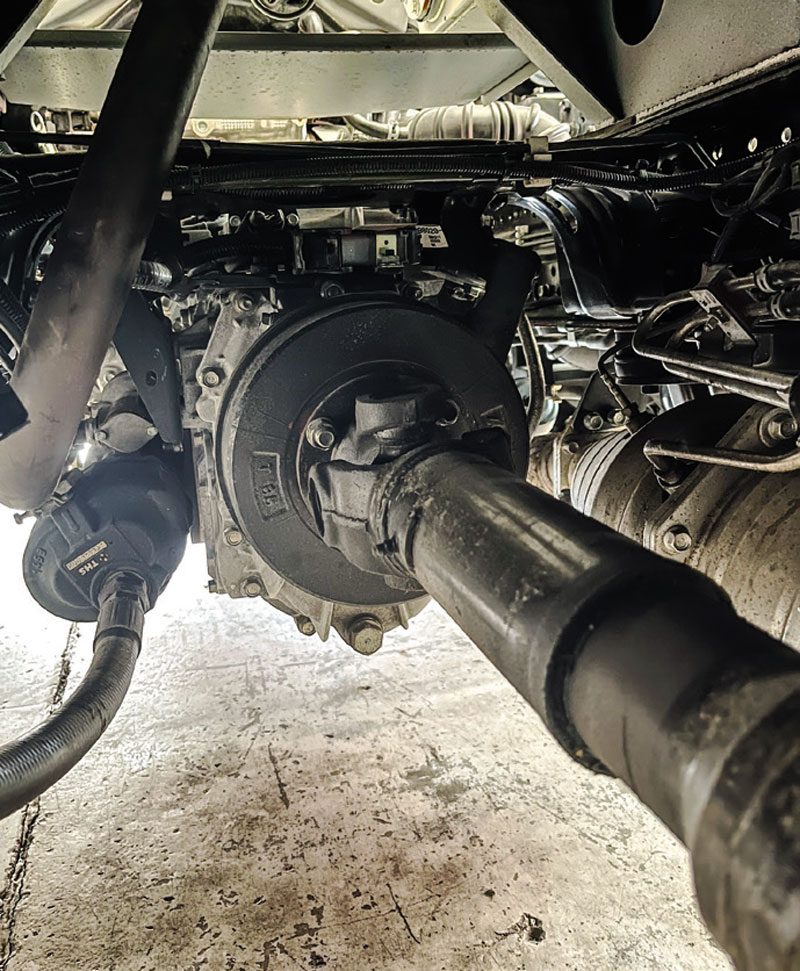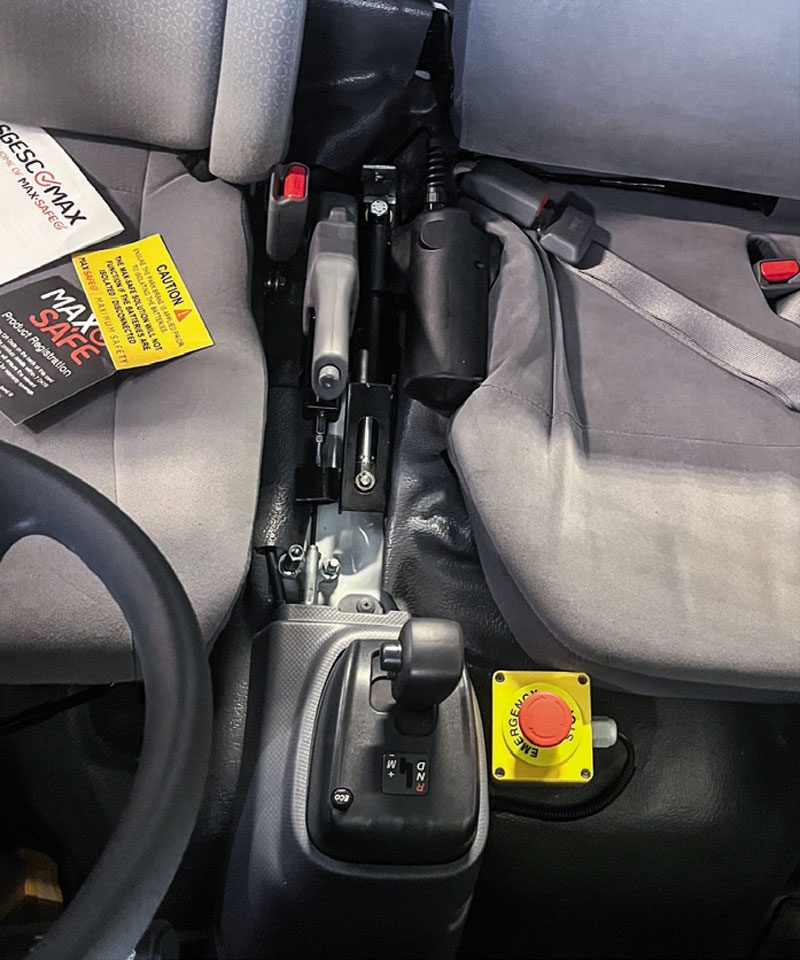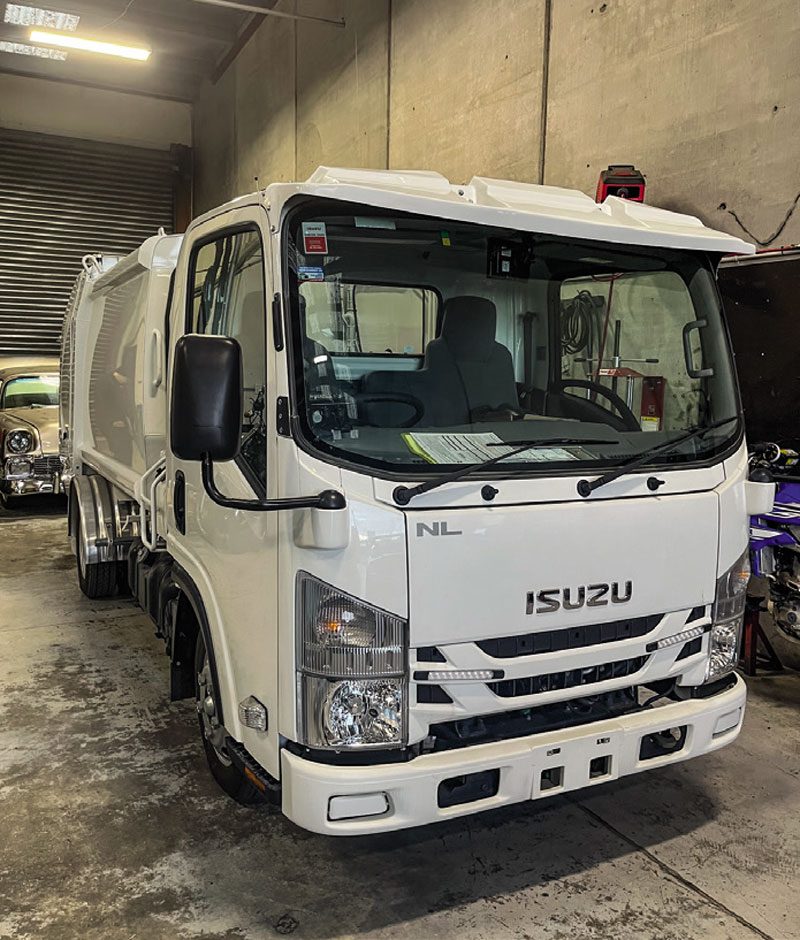
Recently we’ve seen and received a disappointingly steady stream of news releases related to truck rollaways. What’s going on?
The reports are similar: “A truck has rolled into…”, “Police are investigating the cause…”. It begs the question: how can someone ‘forget’ to apply a parking brake? And, how can a parking brake be misapplied? A truck rollaway could happen to anyone – and quite often as a result of driver error.
Given the mass of even a light truck, significant injury and damage can occur with even a low-speed rollaway. In most of the recent reports we’ve seen, the trucks in question were rubbish-collection trucks and similar metro-oriented vehicles.
This is no coincidence and is reflected in the interaction Gary Puklowski, managing director of Autokraft Electrical & Diesel has had with customers who choose to fit the MAX-SAFE Anti-Rollaway Brake System. AutoKraft is its New Zealand distributor and installer.

“In essence, a rollaway can happen in any truck at any time. The most susceptible trucks would have to be the ones where the operators are getting in and out of frequently, with high levels of interaction externally of the vehicle,” he says.
The MAX-SAFE Anti-Rollaway Brake System is an active braking system for when handbrakes are not appropriately applied. It provides audible warnings if a driver tries to exit the vehicle with the brake not fully applied and automatically fully applies the parking brake if the warning is ignored. More than 240 units are currently installed into trucks on New Zealand roads.
“It could be a momentary lapse of concentration, a park brake lever with a fault, or an emergency situation where the operator has to act quickly and forgets to apply the park brake. Any of these situations could allow a rollaway to happen. Reducing the vehicle’s capacity to rollaway is critical and the key to prevention,” Puklowski says.
Puklowski’s comments point to driver error being a cause of rollaways and, indeed, he notes that mechanical failures are not the norm from what he’s seen. “One of the largest issues we hear about is cardan-shaft park brakes not being applied to the correct force.”
Cardan-shaft park brakes are mounted directly to the driveshaft at the gearbox housing and act on the driveshaft, preventing it from turning and holding the vehicle stationary. They need to be applied with sufficient force to hold the vehicle stationary depending on its load and the angle of the road on which it is parked. According to Waka Kotahi New Zealand Transport Agency (NZTA), about 55,000 trucks on New Zealand roads are fitted with cardan-shaft brakes.

In March 2021, the NZTA released a report into cardan-shaft park brakes after conducting a random roadside in-service testing and evaluation programme of 90 trucks between three-tonne and 23-tonne GVM. According to the NZTA, cardan- shaft brakes have been linked to several rollaway incidents, and the agency was prompted to conduct the programme after a fatal incident in March 2020. The full report can be found online. However, some of the findings provide insight into the problem.
The testing programme was designed to simulate the required standards of a CoF and subjected vehicles to stall and forward and reverse pull tests. Numerous conclusions found by the programme indicated a lack of maintenance and driver education regarding cardan-shaft brake systems.
• 80% of vehicles tested could meet the current CoF inspection stall test, but they did not provide enough holding power for the pull test;
• 12% of vehicles tested were not capable of meeting the current CoF inspection stall test;
• 67% of vehicles tested could reach the target pull test force but required more lever travel and more lever force than the manufacturer’s specifications to achieve it;
• more than 20% of vehicles indicated an issue with the cable operation of the cardan-shaft brake, including worn, stretched, and seized cables;
• more than 30% of vehicles indicated poor adjustment of the cardan-shaft brake system, including worn shoes, excess lever travel and incorrect adjustment of the brake shoes;
• 67% of drivers were unaware of the type of park brake fitted to the vehicle they were driving;
• 70% of drivers had no knowledge or experience with cardan-shaft brakes;
• 78% of drivers were unaware of when the most recent park brake servicing had occurred; and, significantly,
• 28% of drivers had encountered park brake issues, including a rollaway event, with the vehicle they were driving.

While the MAX-SAFE Anti-Rollaway Brake System is available for vehicles fitted with a cardan-shaft park brake, relying on even an active warning system should not be the first line of defence. As with any mechanical system, braking systems need to be correctly and timeously maintained, whether mechanical (cardan shaft) or pneumatic.
In March 2021, NZTA banned Sanwa Seiki pneumatic park brake mechanisms after issuing numerous safety alerts and incidents involving trucks fitted with this system over 10 years. In addition to the NZTA noting the vulnerable location of the Sanwa Seiki lever mechanism between the driver’s right-hand leg and the door, it also noted these mechanisms were prone to wear and tear over time (aggravated by their placement in the cab) and, when worn, may not fully engage the brakes.
Given these mechanisms were fitted to trucks up to 18 years old, the chances of faults were high, and the NZTA mandated a replacement of the Sanwa Seiki park brake control valve and preferable relocation to the centre console. Vehicles not retrofitted and certified as compliant within six months would not obtain a CoF.
In an RNZ report on 18 March, NZTA was quoted as saying 750 of roughly 1000 mandated trucks had so far met the requirements of the ban.
NZ Police CVST declined our request for comment. NZTA and WorkSafe could not meet our request for information before going to print.
Read more
A chip off the old block
0 Comments9 Minutes
Once again with Harte part I
0 Comments33 Minutes
The Northman part II
0 Comments34 Minutes





